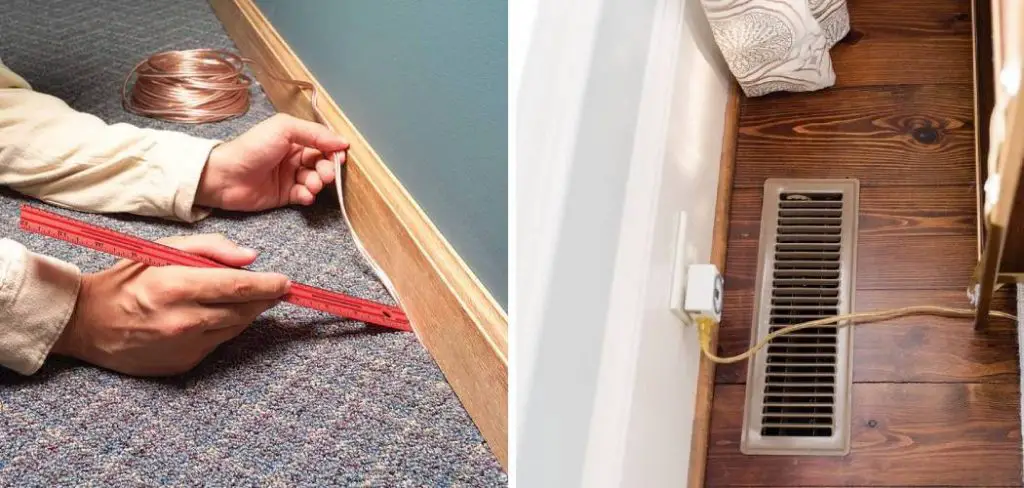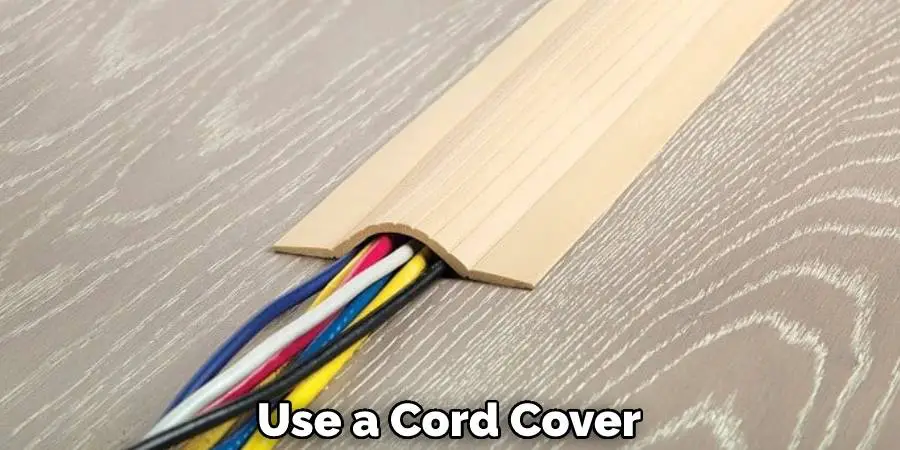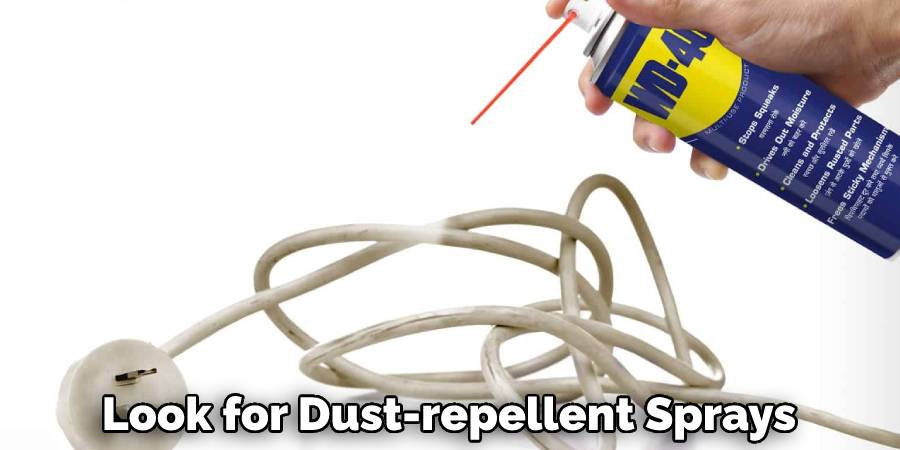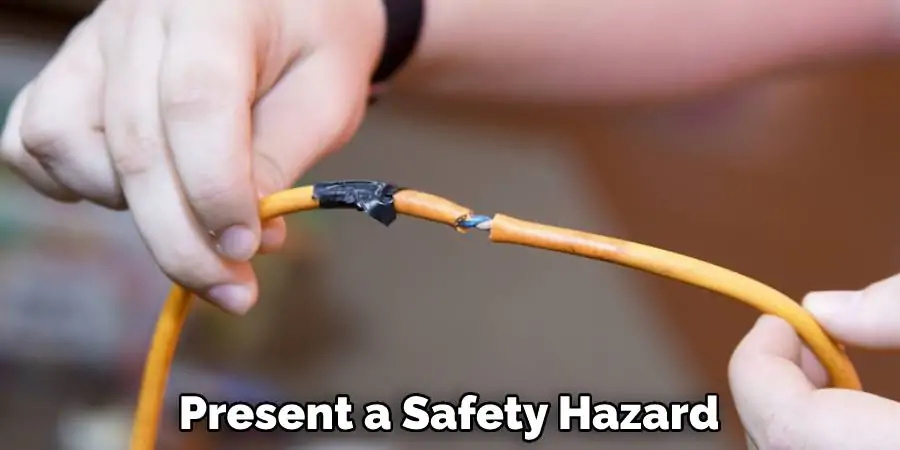Floor lamp cords can often be an eyesore and get in the way of your décor. Hiding them is a great way to ensure that your floor lamps don’t take away from the beauty of your home. Not only will it look better, but it can also help keep the cords out of sight and prevent any tripping hazard.

One of the main advantages of hiding floor lamp cords is that it can create a tidier and more aesthetically pleasing living space. Hiding the cords helps to declutter your home, which in turn can make it appear larger and more inviting. Furthermore, hiding cords ensures they are not visible to guests or children who may accidentally trip over them. In this blog post, You will learn how to hide floor lamp cords in detail.
Step-by-Step Processes for How to Hide Floor Lamp Cords
Step 1: Inspect the Lamp
Before trying to hide the lamp cord, inspect it closely. Make sure that there are no exposed wires or fraying insulation. If so, replace the cord before proceeding with the task at hand.
Step 2: Choose How to Hide the Cord
How you choose to hide a floor lamp’s cord depends on your set-up and preferences. Some options include wrapping the cord around a corner, hiding it behind furniture or in a plant, using cord covers or concealment strips, or using a decorative basket to store the extra length of cord.

Step 3: Secure the Cord Using Tape
Use clear packing tape to secure the cord in place to prevent your chosen method from moving out of place over time. If you wrap your cord around a corner, ensure it’s done securely. Start by wrapping the top portion of the cord around the corner, then move down towards the plug-in. Ensure that you don’t cross any wires over each other and that the cord is straight and tidy.
Step 4: Hide the Cord Behind the Furniture
To hide a lamp cord behind furniture, use a slim cord cover or even an old sock to disguise it. Make sure that the piece of furniture you’re using is tall enough so that it covers the entire length of the cord. Use an opaque pot or planter to hide a cord in a plant. Make sure to leave some extra room for the cord to move around without getting tangled up. Alternatively, you can also wrap the cord loosely around the base of the plant and secure it with tape.
Step 5: Use Cord Covers or Concealment Strips
If you have a lot of cords in the same room, cord covers are great for keeping them organized and out of sight. Alternatively, if you’re looking for something more decorative, concealment strips are an ideal way to hide multiple cords without compromising on style. If you have an extra length of cord that needs to be hidden away, a decorative basket can do the job. Just ensure that the basket is wide enough so that the cord fits both inside and outside of it.
Step 6: Tape Down Any Extra Length of Cord
If you have an extra length of cord that can’t be hidden away, make sure to tape it down with clear packing tape. This will help keep the cord from getting tangled up or creating a tripping hazard. Before you deem your work complete, test out the lamp and ensure that all the cords are secure and hidden away.

Hiding the cords of a floor lamp doesn’t have to be difficult. Just remember to follow these steps for Hiding Floor Lamp Cords, and you’ll be ready to go in no time.
Tips for How to Hide Floor Lamp Cords
- Unplug the floor lamp before unhooking the cord and moving it. This prevents any electrical shocks or short-circuiting of the wiring.
- Make sure that the cord is not too close to the edge of a rug, carpet or other furniture – this can cause a tripping hazard when someone steps on it.
- Use a cord cover to conceal the wiring. This is especially helpful if the cord runs through a high-traffic area in your home or office.
- If you have small children or pets, make sure all cords are out of their reach and not accessible to them in any way.
- Make sure that any nails or screws used to secure the cord cover are properly secured and won’t come loose easily.
- Check the area where you plan on hiding the cords for any sharp edges that could puncture or cut the wiring.
- Do not place furniture near exposed cords, as this can also create a tripping hazard.
- Inspect the wiring of your floor lamp periodically and check for any signs of wear or damage. Replace it with a new cord or contact an electrician for professional repairs if necessary.

By following these tips when you hide floor lamp cords, you can ensure that your home is safe and free from potential electrical hazards.
How Can You Prevent Dust From Collecting on Your Hidden Floor Lamp Cords?
One of the biggest challenges with hiding floor lamp cords is keeping them dust-free. After all, it’s easy for dust to settle on any exposed surface, and this can be especially problematic when cords are concealed behind furniture or walls. Fortunately, you can take a few simple steps to prevent dust from collecting on your hidden floor lamp cords. The first step is to keep the cords as dust-resistant as possible. This means using special cord covers or wraps designed to protect them from air particles and regularly wiping them down with a soft cloth.
Additionally, you can look for dust-repellent sprays specifically made for electrical cords and apply it to the cords before covering them. Another important step is to vacuum around the area where your cords are hidden on a regular basis. This will help ensure that any dust and dirt particles stay away from your lamp cords and that air is circulating properly through the concealed space. It’s also a good idea to check your cords periodically to ensure they aren’t clogged with debris.

How Can You Make Sure That Your Floor Lamp Cord Does Not Damage the Walls or Floors When Hidden?
The best way to ensure that your floor lamp cord does not cause any damage to the walls or floors when hidden is to purchase a cord cover. Cord covers come in various lengths and are designed to be placed over cords, keeping them from coming in contact with walls and floors. You can ensure your lamp cords are hidden and protected by purchasing a cord cover.
Another great way to hide floor lamp cords is to use decorative baskets or trays to hold items around the lamp. This will help keep the cord away from walls and add a decorative touch to your living space. You can also use furniture pieces such as an ottoman or table with drawers that can help to hide the cord. If you don’t want to purchase an additional item or make any major changes, you can also use electrical tape or zip ties to bundle the cord and keep it away from walls and floors. This is often a cheaper option, as well as being less intrusive than other solutions.
How Often Should You Check the Condition of Your Hidden Floor Lamp Cords?
Regularly checking the condition of your hidden floor lamp cords is important to ensure that everything stays safe and secure. How often you should check them depends on how frequently they are used and their overall condition. In general, however, you should check your hidden floor lamp cords at least once every few months to make sure that they are still in good working order.
When you do check your hidden floor lamp cords, look for any signs of wear or damage. If you see any fraying, cracks, or other indications that the cord is not functioning properly, replace it immediately to avoid potential hazards. Depending on the type of cord and its intended use, you may want to consider investing in a higher-quality cord that is more durable and long-lasting. In addition to checking the cords, you should also make sure that they are properly secured and organized. Loose wires can present a safety hazard by creating an accidental trip risk or exposing bare wire. Make sure to store all of your cords away from any areas that may present a risk.

How Do You Troubleshoot Any Issues With Your Hidden Floor Lamp Cords?
If your hidden floor lamp cords are not working properly, there are several steps you can take to troubleshoot the issue. Start by checking the power source for the cord. Make sure it is plugged in and turned on. If it is, then check that all of the wirings between the plug and lamp is intact and secured correctly. If there are any loose connections, you may need to rewire the lamp or replace it. Also, double-check that the bulb is working correctly and securely in place.
Finally, check for any other obstructions that may be preventing the cord from functioning properly. This includes checking for kinks in the cord or damages caused by pets or children. If any of these items are present, you may need to replace the cord or call a professional for assistance. Once your lamp is working correctly, be sure to store any excess cords in an area that is out of reach from children and pets. This can help prevent future issues with your floor lamps and make them safer to use.
Conclusion
In conclusion, hiding floor lamp cords is a great way to add a neat finish to your home. Depending on the wiring and electrical design of your room, you can take many different approaches to achieve this. The most common solutions include using cord covers, running the cord along a wall or baseboard, or concealing it within the furniture.
With some creativity and patience, you can easily hide the cords of your floor lamps and make your home look more inviting. I hope this article has been beneficial for learning how to hide floor lamp cords. Make Sure the precautionary measures are followed chronologically.

